| Listing 1 - 10 of 39 | << page >> |
Sort by
|
Book
Abstract | Keywords | Export | Availability | Bookmark
 Loading...
Loading...Choose an application
- Reference Manager
- EndNote
- RefWorks (Direct export to RefWorks)
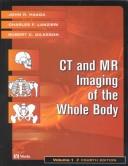
ISBN: 0323011330 9997635396 999763540X Year: 2003 Publisher: St. Louis, Mo. ; [Great Britain] : Mosby,
Abstract | Keywords | Export | Availability | Bookmark
 Loading...
Loading...Choose an application
- Reference Manager
- EndNote
- RefWorks (Direct export to RefWorks)
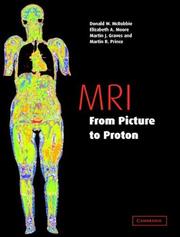
ISBN: 0521818591 Year: 2003 Publisher: Cambridge, UK ; New York : Cambridge University Press,
Abstract | Keywords | Export | Availability | Bookmark
 Loading...
Loading...Choose an application
- Reference Manager
- EndNote
- RefWorks (Direct export to RefWorks)
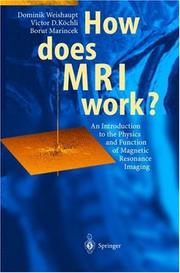
ISBN: 3540440941 Year: 2003 Publisher: Berlin Springer
Abstract | Keywords | Export | Availability | Bookmark
 Loading...
Loading...Choose an application
- Reference Manager
- EndNote
- RefWorks (Direct export to RefWorks)
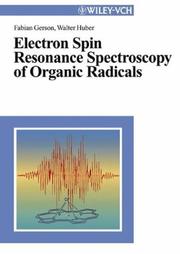
ISBN: 3527302751 9783527302758 Year: 2003 Publisher: Weinheim: Wiley-VCH,
Abstract | Keywords | Export | Availability | Bookmark
 Loading...
Loading...Choose an application
- Reference Manager
- EndNote
- RefWorks (Direct export to RefWorks)
Electron spin resonance spectroscopy is the method used to determine the structure and life expectancy of a number of radicals. Written by Fabian Gerson and Walter Huber, top experts in the field of electron spin resonance spectroscopy, this book offers a compact yet readily comprehensible introduction to the modern world of ESR. Thanks to its comprehensive coverage, ranging from fundamental theory right up to the treatment of all important classes of organic radicals and triplet-state molecules that can be analyzed using ESR spectroscopy, this unique book is suitable for users in both research and industry. Instead of using complex mathematical derivations, the authors present a readily understandable approach to the field by interpreting sample spectra and classifying experimental data. In short, the ideal book for newcomers to the subject and an absolute must-have for everyone confronted with ESR spectroscopy and wanting to become acquainted with this widely-used method of analysis.
Book
Year: 2003 Publisher: Bruxelles: UCL,
Abstract | Keywords | Export | Availability | Bookmark
 Loading...
Loading...Choose an application
- Reference Manager
- EndNote
- RefWorks (Direct export to RefWorks)
Electron paramagnetic resonance (EPR) oxymetry in the measurement of partial pressure of oxygen (Po2) based upon the observation of changes in the line width of the EPR signal. This can be realized by means of using oxygen sensors. Among these, the carbon blacks (India ink pigments) show interesting characteristics like great oxygen sensitivity and small particles size. This study proposes the manufacturing of an artificial ink, injectable, stable and biocompatible for the use as a EPR sensor.
The work is organized around different axis’s of manufacture, characterization and studies of inks.
First, we evaluated the EPR parameters for the selected carbon black (Printex U) particles. The determination of the spin density and the saturation curve whom governs the EPR signal is realized. This approach is completed by the study of the Lorentzian component of the absorption spectrum.
The second step consists in the development of the ink itself by studying the concentration of the Printx U particles and the biopolymers needed to realize an injectable ink after sterilization in an autoclave.
A physico-chemical characterization allows to assess the sedimentation of the particles in different preparations. The rheological behavior of inks is identified. Finally, a study of in vitro relative diffusion is realized.
During one month, feasibility of measurements of oxygen is carried out in vivo after the introduction of the sensor within the gastrocnemius muscle of a mouse. Concurrently, line width measurement have been achieved as well as the sensor’s kinetic response depending on the oxygen present before end after staying in vivo.
Finally, a first study of biocompatibility in vitro is realized by heamolysis and cytotoxicity test. This approach is completed in vivo by histological evaluation of the oxygen sensor’s injection site.
In conclusion, a, injectable artificial ink, stable, biocompatible has been achieved. The stabilization of the EPR L band in vivo response will probably allow it every day use to achieve oxymetry of tissues and tumors L’oxymétrie par Résonance Paramagnétique Electronique (RPE) consiste en la mesure de la pression partielle en oxygène (pO2) basée sur l’observation du changement de la largeur de la raie du signal RPE. Ceci peut être réalisé grâce à l’emploi de senseurs à oxygène. Parmi ceux-ci, les noirs de carbone (pigments de l’encre de Chine) présentent des propriétés intéressantes comme une grande sensibilité à m’oxygène et une faible taille de particules. Ce travail propose l’élaboration d’une encre artificielle injectable, stable, biocompatible comme senseur RPE.
Le travail s’articule autour de différents axes de fabrication, de caractérisation et d’études des encres.
Dans un premier temps, une évaluation des paramètres RPE des particules du noir de carbone choisi (Printex U) est réalisée. La détermination de la densité de spins et de la courbe de saturation de la réponse conditionnant le signal RPE est effectué. Cette approche est complétée par l’étude de la composante Lorentzienne du spectre d’absorption.
La deuxième étape concerne le développement de l’encre proprement dite, en étudiant les concentrations de particules de PrintexU et de biopolymères requises pour réaliser une encre injectable après stérilisation par autoclave.
Une caractérisation physico-chimique permet d’évaluer le comportement des encres vis-à-vis de la sédimentation de leurs particules. Le comportement rhéologique des encres est déterminé. Enfin, une étude de la diffusion relative in vitro est menée.
Durant un mois une évaluation de la faisabilité de mesures in vivo en RPE bande L est réalisée après implantation du senseur au sein de muscles gastrocnémiens de souris. On réalise en parallèle la mesure de la largeur de raie ainsi que la cinétique de réponse du senseur en fonction de l’oxygène avant et après séjour in vivo.
Enfin, une première étude de biocompatibilité est menée en réalisant les tests in vitro d’hémolyse et de cytotoxicité. Cette approche est complétée in vivo par l’évaluation histologique des sites d’injection du senseur à oxygène.
En conclusion, une encre artificielle injectable, stable, biocompatible est développée. La stabilisation de sa réponse in vivo en RPE bande L permettra probablement son utilisation en routine pour réaliser de l’oxymétrie de tissus ou de tumeurs
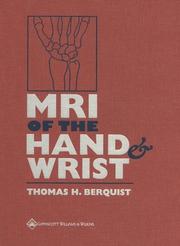
ISBN: 0781737966 9780781737968 Year: 2003 Publisher: Philadelphia: Lippincott Williams & Wilkins,
Abstract | Keywords | Export | Availability | Bookmark
 Loading...
Loading...Choose an application
- Reference Manager
- EndNote
- RefWorks (Direct export to RefWorks)
Hand --- Wrist --- Magnetic Resonance Imaging
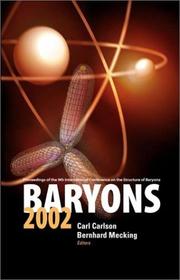
ISBN: 1281906298 9786611906290 9812704884 9789812704887 981238409X 9789812384096 Year: 2003 Publisher: River Edge, N. J. ; Singapore : World Scientific,
Abstract | Keywords | Export | Availability | Bookmark
 Loading...
Loading...Choose an application
- Reference Manager
- EndNote
- RefWorks (Direct export to RefWorks)
This book deals with the latest developments in the area of three-quark systems. Emphasis is given to the discussion of new experimental results in the areas of form factors, unpolarized and polarized structure functions, and baryon structure and spectroscopy. Of particular interest are the new theoretical developments in the area of generalized parton distributions and lattice quantum chromodynamics.
Baryons --- Baryon resonance --- Resonance, Baryon --- Nuclear magnetic resonance --- Fermions --- Hadrons --- Heavy particles (Nuclear physics)
Book
ISBN: 2294014111 Year: 2003 Publisher: Paris : Masson,
Abstract | Keywords | Export | Availability | Bookmark
 Loading...
Loading...Choose an application
- Reference Manager
- EndNote
- RefWorks (Direct export to RefWorks)
Book
Year: 2003 Publisher: Bruxelles: UCL,
Abstract | Keywords | Export | Availability | Bookmark
 Loading...
Loading...Choose an application
- Reference Manager
- EndNote
- RefWorks (Direct export to RefWorks)
Electron paramagnetic resonance (EPR) oxymetry relies on the broadening of an EPR line width of a paramagnetic probe which is directly related to the partial pressure of oxygen (pO2). Among many paramagnetic EPR spin probes, we choose Lithium Phthalocyanine (LiPc) as it has several advantages including extremely sharp EPR absorption line, very short response time and linear oxygen response curve within very wide oxygen range. In this work, two ways have been investigated. In a first time, we developed biopolymer film holding LiPc in order to stabilize the sensitivity to oxygen and to immobilize the crystals. Films were made by a solvent evaporation technique (oven 70°c) on a watch glass. A strong film was obtained using a solution of Teflon® AF 2400 (biopolymer) at 1% (w/v). The coating of LiPc preserved whole its characteristics. The second way of investigation consisted in the development of a film holding LiPc into a loop of an EPR catheter or needle resonator. We have immerged the loop in a solution of Teflon at 3% to from the films holding LiPc . We further increased the thickness of the film by multiple additions of Teflon 3%. Minimum two cycles were necessary to obtain a film that possessed high mechanical resistance when preserving the sensitivity to O2 and the short response time of LiPc. Finally, we have studied the biocompatibility at these systems (Teflon film with or without holding LiPc, catheter and needle resonator). Several in vitro and in vivo tests have been performed. In comparison with a negative standard (USP-88) we have shown that these systems induced a low or no reaction by the host. However, complementary tests have to be performed in order to definitely attest biocompatibility. Some resonator with a film holding LiPc produced in hour laboratory have been sent to Dartmouth Medical School (USA) and were tested in vivo by L band EPR L’oxymétrie par résonance paramagnétique électronique (RPE) consiste en la mesure de la pression partielle en oxygène (pO2) basée sur la mesure du changement de la largeur de raie du signal RPE en fonction. Parmi de nombreux senseurs à oxygène pour la RPE, nous avons choisi les cristaux de phtalocyanine de lithium grâce à leurs nombreux avantages tels qu’une raire d’absorption RPE extrêmement fine, un temps de réponse court et une courbe de réponse à l’oxygène linéaire dans une large gamme de pO2. Ce travail s’est fait en deux étapes. Au cours de la première étape, nous avons développé la fabrication de film de bio polymère perméable à l’oxygène afin de stabiliser la sensitivité à l’oxygène du LiPc tout en immobilisant ses cristaux. A cet effet, la technique d’évaporation de solvant (étuve 70°) a été utilisée. A partir d’une solution de téflon® AF 2400 à 1%, on est parvenu à obtenir un film solide tout en préservent les caractéristiques du senseur RPE (LiPc). La seconde étape de ce travail a permis de réaliser des films Téflon contenant du LiPc mais cette fois, sur la boucle de résonateurs ou antennes RPE implantables (fabriqués aux USA par l’équipe du Professeur H. Swartz). Pour ce faire, nous avons immergé trois fois la boucle des résonateurs RPE dans une solution de Téflon « % avant d’incorporer des cristaux de LiPc au film formé. Ensuite, pour augmenter l’épaisseur du film on a effectué des cycles de recouvrement en déposant sur le film une goutte de solution de Téflon à 3%. Au minimum 2 cycles sont indispensables pour obtenir un film de bonne résistance mécanique tout en préservant la sensibilité et la vitesse de réponse eu LiPc à l’oxygène. Enfin, nous avons réalisé plusieurs tests in vitro et in vivo pour contrôler la biocompatibilité de ces systèmes (film Téflon avec ou sans LiPc, résonateur ou antenne RPE). En validant ces tests avec un contrôle négatif, nous avons montré que ces systèmes ne devraient induire que peu ou pas de réactions après implantation chez l’homme. Toutefois, pour s’en assurer, des tests complémentaires devraient être réalisés. Des résonateurs enrobés au téflon et contenant du LiPc ont été fabriqué au laboratoire REMA et envoyés à l’Université de Dartmouth aux Etats-Unis pour y être testés chez l’animal sur une RPE bande L (1GHz).
Electron Spin Resonance Spectroscopy --- Lithium --- Oximetry
| Listing 1 - 10 of 39 | << page >> |
Sort by
|

 Search
Search Feedback
Feedback About
About Help
Help News
News